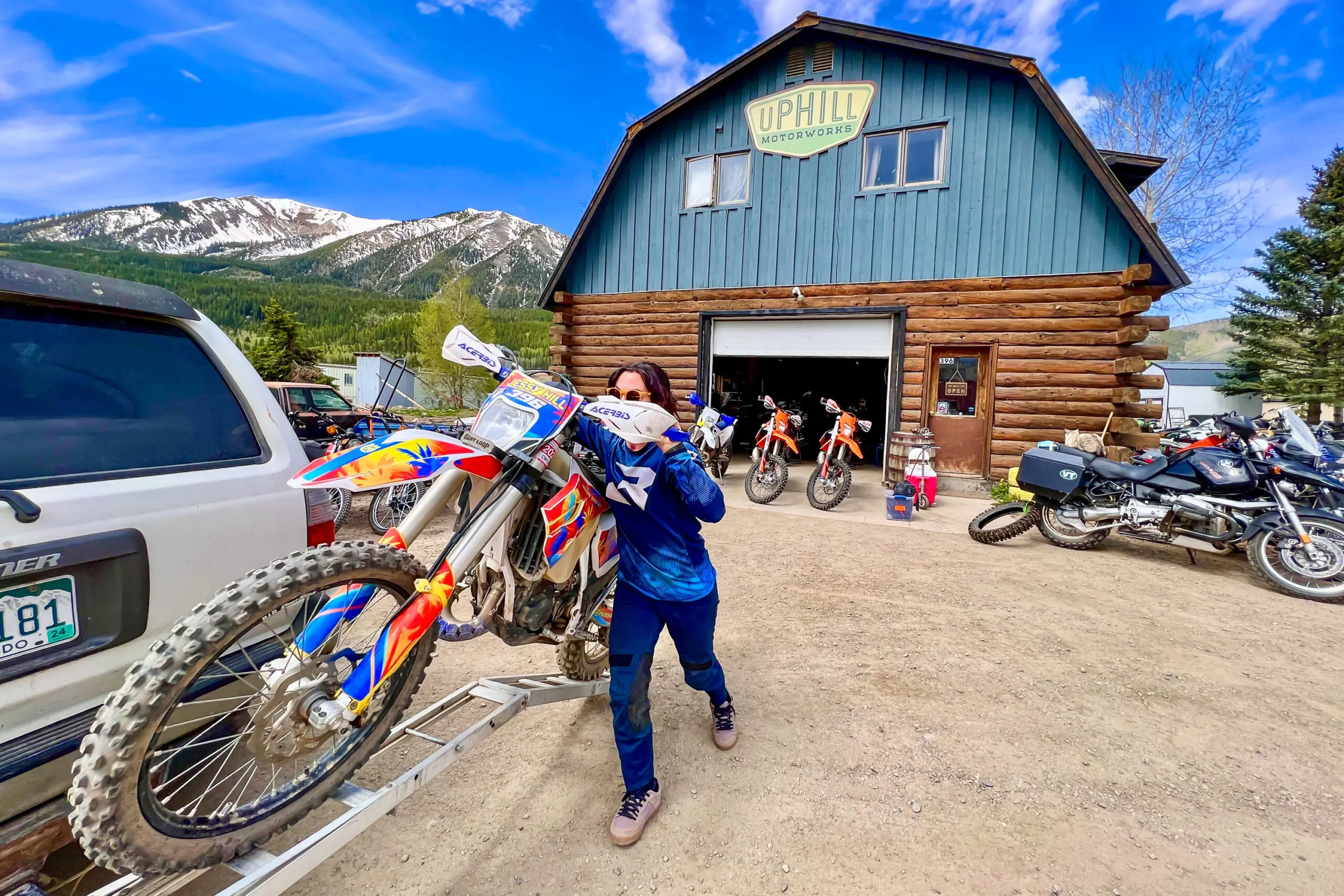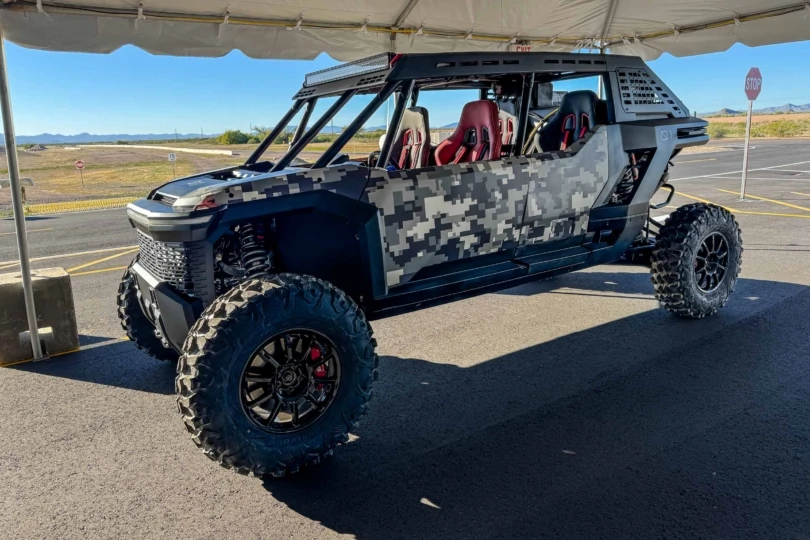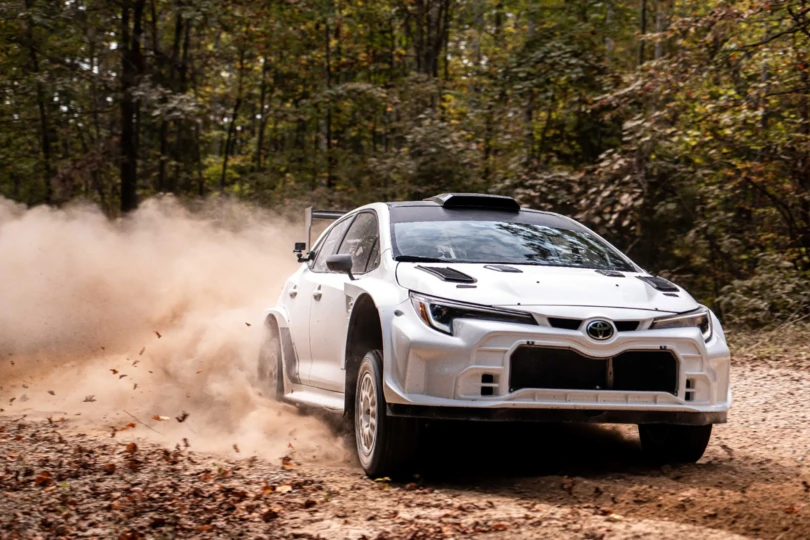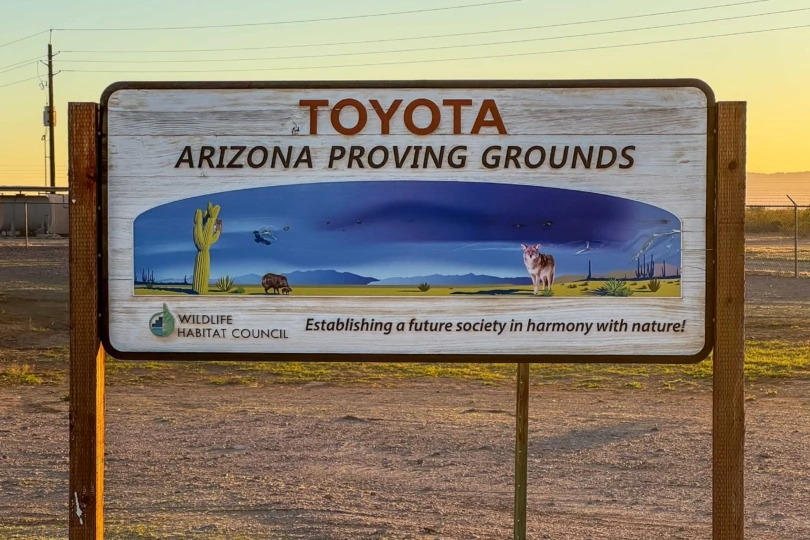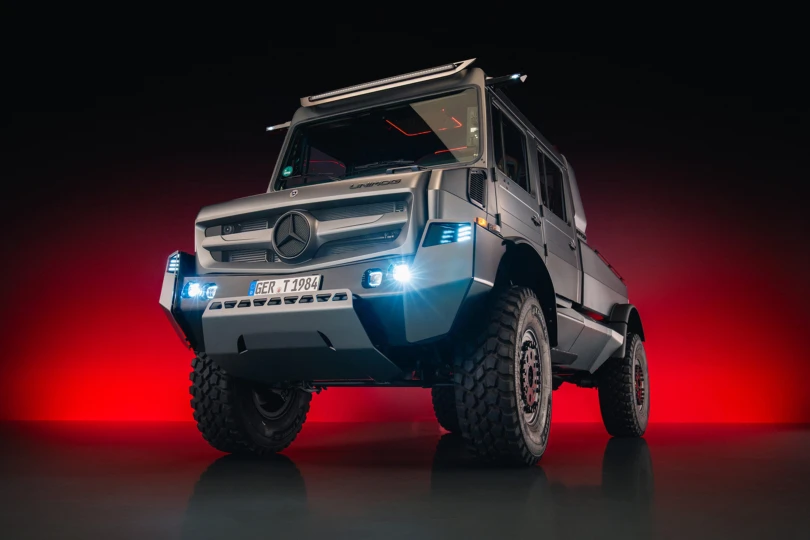I still remember my first attempt at loading my “little” Honda CRF 230 dual sport onto a single-moto hitch carrier. A total novice, when the 250-pound bike rolled onto the platform above me, I tightened my hold on the grips to keep the rig upright. This activated the throttle as the bike moved up and forward. The motor revved, kicking my ride off the other side, and pulling me down with it.
Plenty of lessons can be relished from that moment. Thankfully, there are a few helpful tricks and techniques that can help you safely, more easily, load your bike.
To that end, when you pick up your first dirt bike or dual sport, you’ll need to determine the best way to transport your moto to the trailhead. A few options exist, from a truck bed or hitch carrier to a trailer. The best option is greatly dependent on your vehicle and budget.
There are pros and cons across the spectrum of options, explains Jessy Hill, co-owner of Uphill Motorworks in Crested Butte, Colo.: “If you have a truck and tight budget, you could get a ramp and load the dirt bike into your bed — that’s X Games mode. The ideal, gold dream is an enclosed trailer with a ramp that protects your bike from the elements and can store all your gear. You can even sleep inside if you have a toy hauler.”
Here, we dive more into two of the most common, more affordable, and moderate investments — the hitch carrier versus the non-enclosed trailer — as well as the pros, cons, and loading tips for each design.
Hitch-Mount Moto Carriers
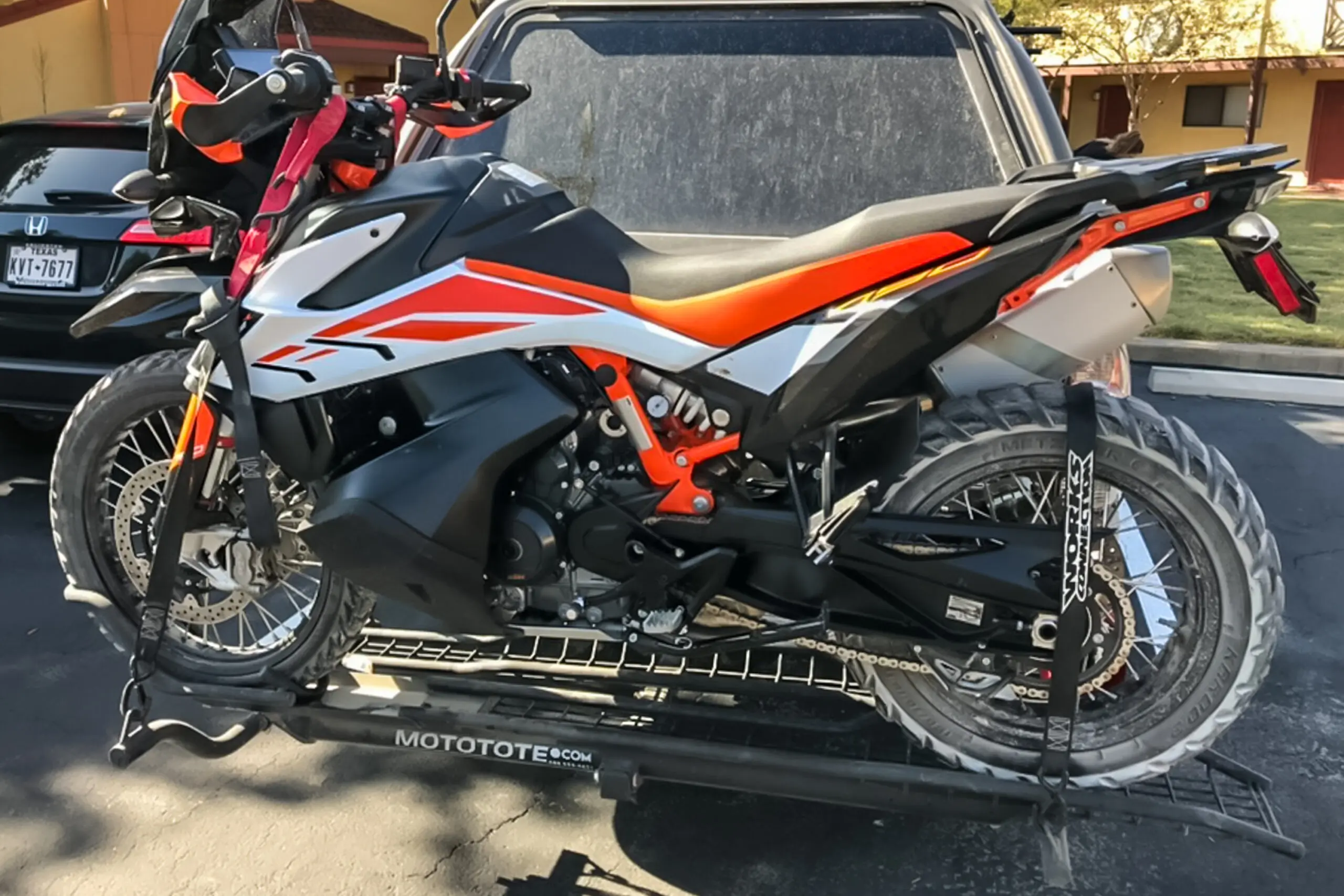
Riders can consider a range of pull-behind and hitch designs including a roll-on hitch carrier for a single bike, which Hill primarily uses, especially when she drives solo to the start of the ride. She uses the aluminum Harbor Freight Haul-Master ($170) with a 400-pound capacity, which fits a 2-inch receiver.
Another option is the lightweight aluminum Black Widow Aluminum Motorcycle Carrier ($180) with a 400-pound capacity for a Class III or IV 2-inch trailer hitch.
“The roll-on hitch carriers all do the same thing: They come with a ramp that you detach and put at the end of the platform to roll up your bike up and then you reattach the ramp. The design works well and is lightweight — I can pick it up and put it on by myself. It’s super cheap if you need to replace it, like if you lose a part or damage it backing into something,” says Hill.
Two-Bike Hitch-Carrier
For stacking two bikes, there are double hitch-carrier designs like the Black Widow Aluminum Double Motorcycle Carrier – 600 lb. Capacity ($390). Hill warns, “Be mindful of your vehicle and if it can support that weight on your hitch. I’d only do that if I had at least a half-ton truck,” which has a 1,000-pound payload.
“We don’t have any cars to support that. I’d only want to do that if I had a 1500 or quarter- or half-ton truck. You have to be mindful of the vehicle you’re in and if it can support that weight on your hitch. If I had a bigger truck, that’d be an option.”
Steel or Aluminum Hitch-Carrier?
The steel options include the EGO Bike Dirtbike Carrier with a 600-pound capacity ($116) or the Pensun heavy-duty rack ($115) with a 500-pound limit. The Black Widow Steel Motorcycle Carrier ($280) includes a built-in wheel chock to cup and anchor the front tire.
The trade-off? “Steel racks are heavier, so they’re harder and more cumbersome to get in and out of the hitch by yourself,” notes Hill.
Whether you go with steel or aluminum, she notes, “you’ll feel the weight on the back end when you’re driving through corners,” and on bumpy roads, so drive mindfully and safely.
Non-Enclosed Motorcycle Trailers
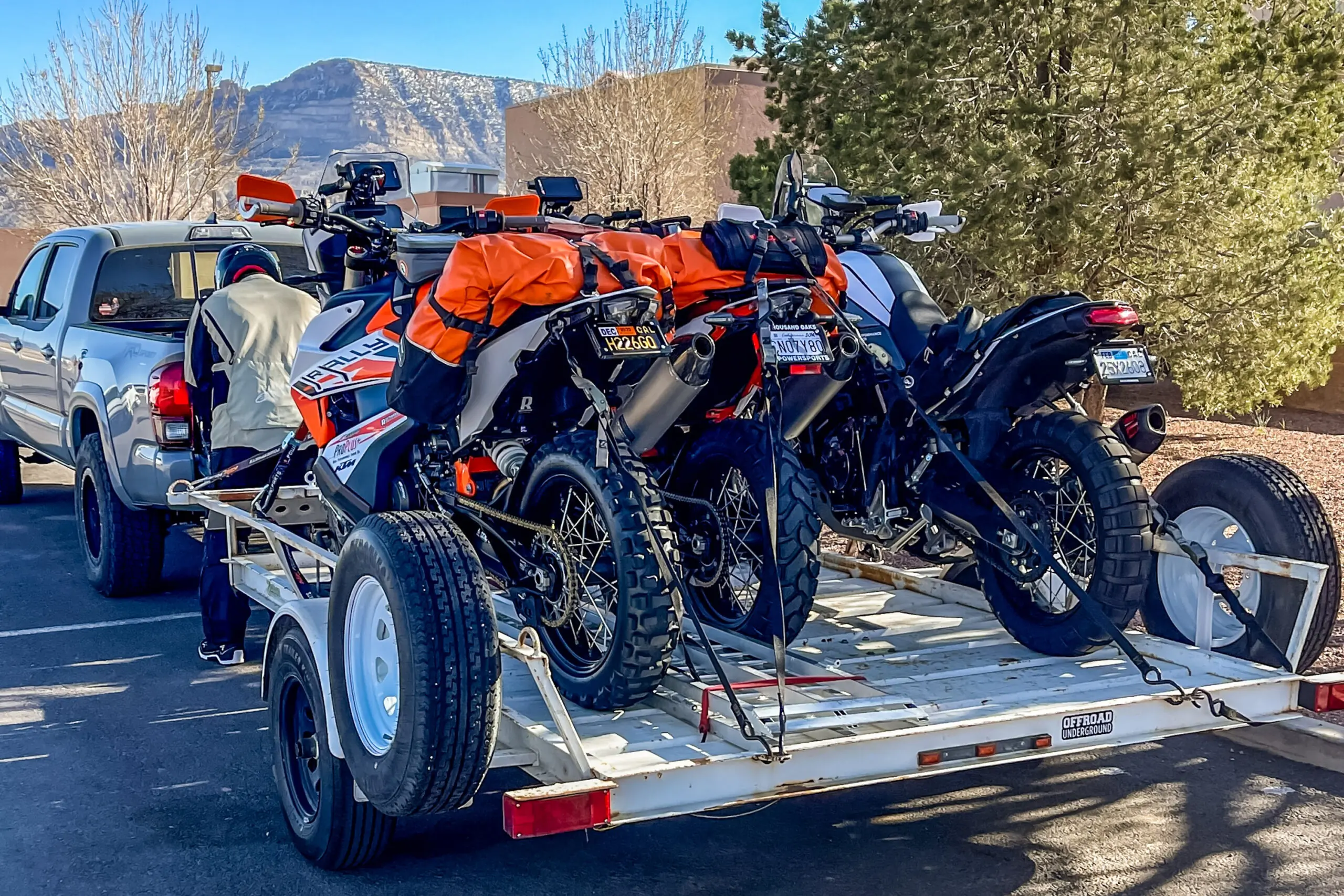
Another option, especially for multiple machines, is to tow your dirt bike on a non-enclosed trailer behind your rig. Tow capacity differs from your vehicle payload, so be sure to check how much weight you can safely pull.
The Freestyle Motorcycle Trailer ($2,499) from the USA Trailer Store comes with integrated tie-down loops and 13-inch aluminum wheels or upgraded off-road Raceline Wheels ($2,668). It fits several bikes side-by-side. A wider 44-inch by 32-inch ride-up ramp ($249) is another premium add-on, so you can walk the bike up. The trailer has a 1,500-pound load limit and LED taillights.
There’s also the Stinger Triple ($3,899) or Kendon Stand-Up Dirt Bike Trailer ($3,699), which fit several bikes and both fold upright for compact storage. “If you are tight on storage space, a fold-up, stand-up design would be perfect. These are also low to ground, come with a ramp and chocks for the front tire, which makes loading easier,” says Hill.
For hauling single bikes, there are options like the USA Trailer Store’s steel Alpha Sport Single Ride-Up Folding Motorcycle Trailer, which you can actually ride or straddle and walk your bike as you load ($2,299). A more economic alternative is the Ace Single Motorcycle Trailer, which is a wide-channel rail ($1,379).
When Hill rides with her husband or a friend, she’ll use a Tractor Supply 5-foot by 8-foot Next Generation Wood Floor Utility Trailer ($1,199) with a lift gate that serves as the ramp. “When we go together, the trailer is easier to use. We bought wheel chocks and screwed those into the wood decking to make two stalls. The ramp is long and not super steep to get up,” says Hill.
Overall, non-enclosed trailers are easier to load than a hitch-mounted carrier. But if you are only hauling only one bike, the strategy required to maneuver a trailer might dissuade you.
“To manage a trailer, you need to be able to back it out in tight spots. The weight might only be on one side if there are two stalls. You can also feel a trailer bouncing around. And the lighter trailers are, the more they bounce around,” says Hill.
Additional Pros & Cons: Hitch-Mount Moto Carriers vs. Trailers
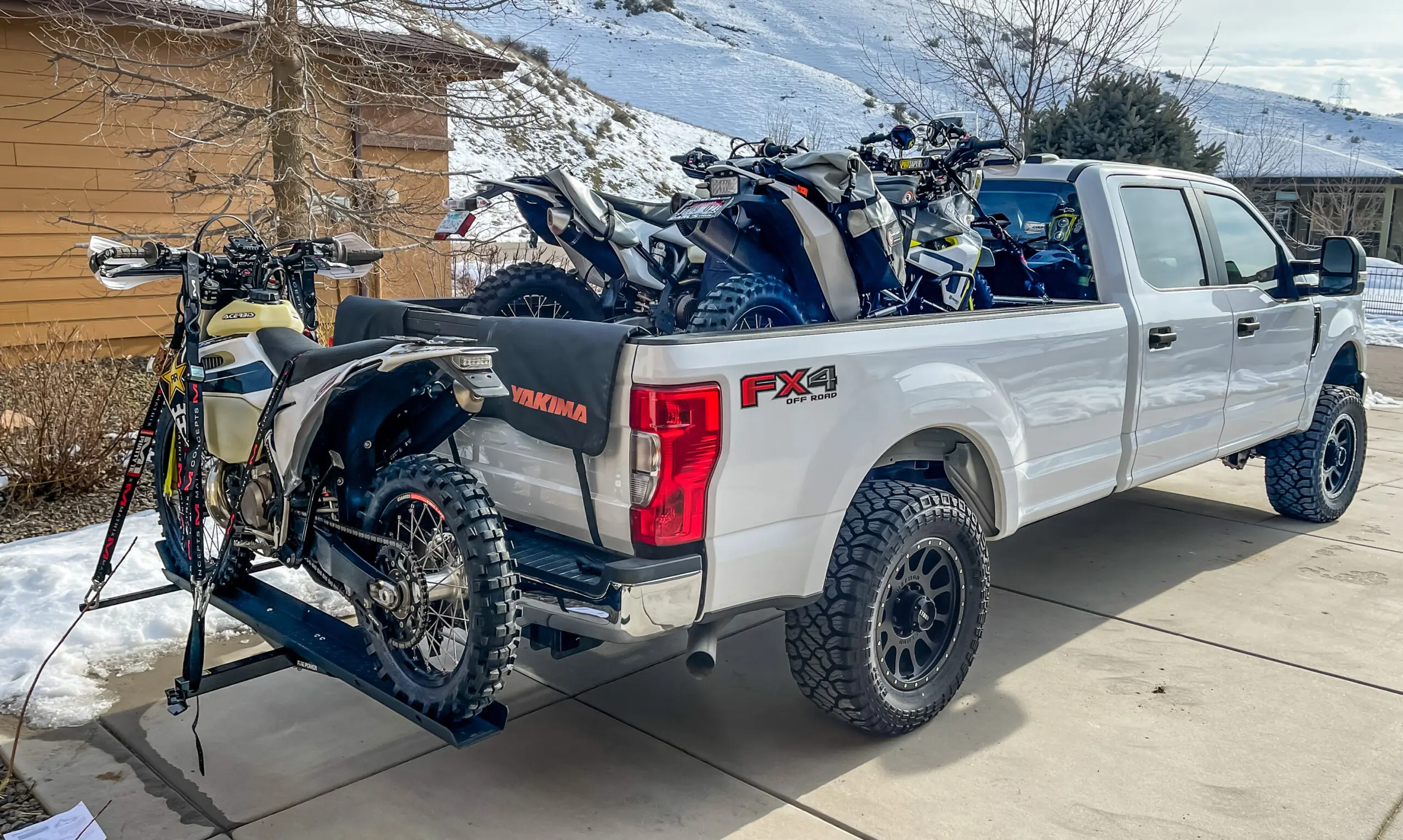



To recap, a hitch-mount dirt bike carrier is budget friendly and lightweight.
The load/unload ramp can be placed on either end of the carrier, for versatility. You can pull the bike forward or push it backward, depending on how and where you’re parked and what’s easier.
“The issues I’ve run into, is if you’re short or small, it can be a challenge to load and unload, and to get the front tire dislodged. You really need to know your rigging system, because there’s little strap space and no forgiveness — I’ve almost lost a bike going down the highway and my husband has lost two bikes,” says Hill. Also, “If you have a heavy bike and a small vehicle, the weight might not feel as good on the road,” she adds.
Investing in a trailer means you also get extra square footage for strapping down rides and camp gear like coolers and a gas can, she says.
Tips to Safely Load & Unload Your Dirt Bike
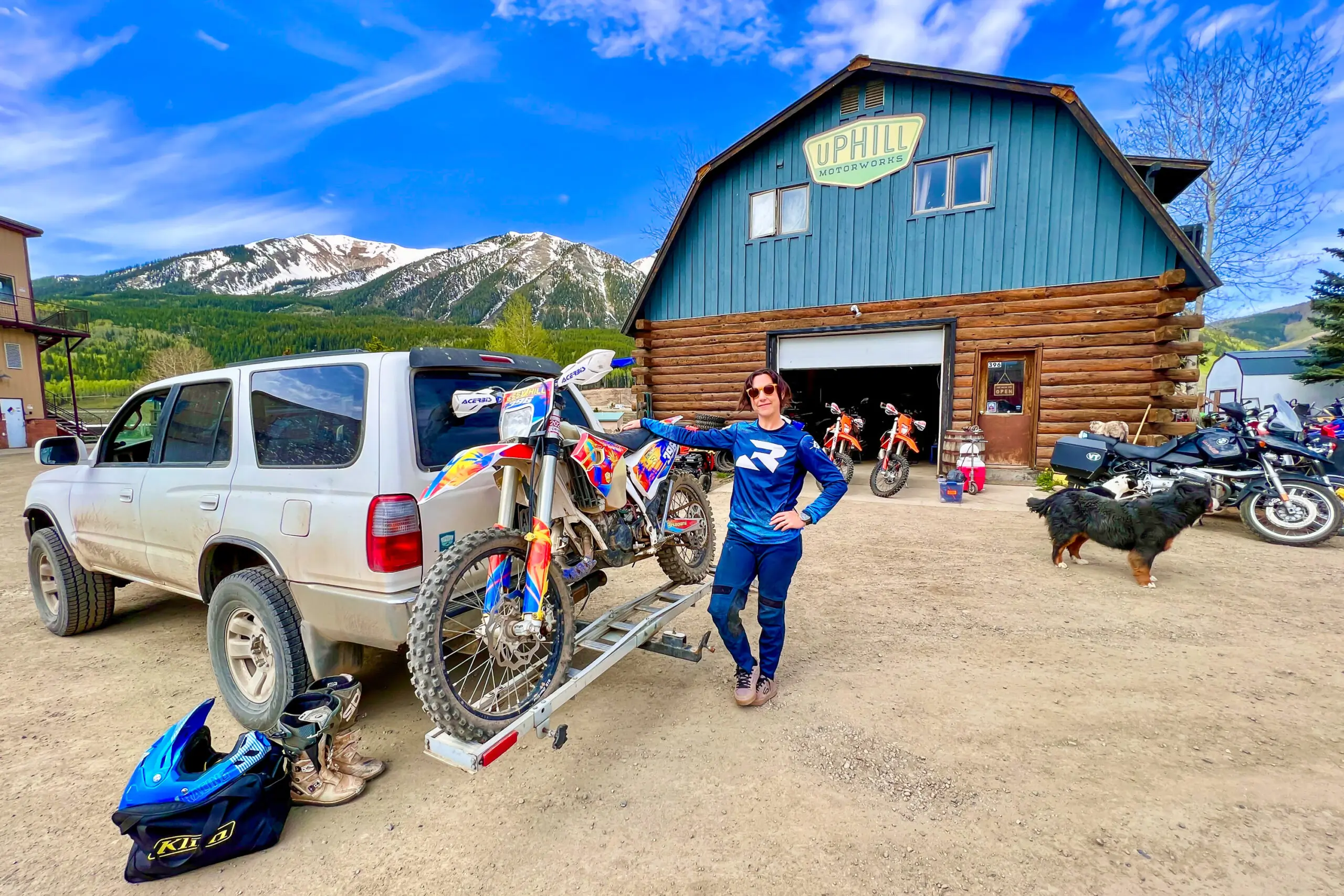



Once you load your bike onto a hitch-mount or trailer, it needs to be secured using ratchet or cam buckle straps. “I prefer ratchet straps because I don’t have the strength to tighten down a cam strap,” says Hill.
Use a suspension guard to protect your front forks. “So when you ratchet your bike down from the handlebars, you’re not putting stress on your suspension, which can blow fluid and seals,” says Hill.
To reduce friction damage from metal hooks on the tie-downs, you can put soft loops around the handlebars, and use ratchet straps on each side.
“If you don’t have soft loops, hook the ratchet straps to the handlebars as close as possible to the triple clamp — don’t put them on the grips, where they could walk off — and make sure to not clamp down any cables or wires. Then, connect the ratchet strap to the holes on the front of the trailer,” explains Hill, who places a third strap over the back tire that hooks directly onto the rack.
When loading a hitch rack or truck bed, park your vehicle angled slightly downhill to create a flatter load approach with the ramp, she says.
“Always cover the break — always,” she says. If you feel the bike toppling over, “Step away and drop the bike. Don’t hurt yourself fighting to keep the bike upright. Just let it go — it’s meant to fall,” she says.
“Footwear matters. Don’t do it in your Birkenstocks. Put on your moto boots for stability. I’ve done it barefoot and in sandals and almost twisted an ankle,” says Hill.
Lastly, Hill says, “Practice at home when you’re not under stress or at a trailhead where you feel pressure with people watching. Everyone will have different body types, strengths, and weaknesses: figure out what that is for you. Then you feel confident and can rely on yourself.”
